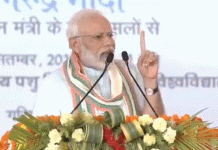
Photo: Ishan Tankha
IT WAS something nobody had anticipated and even fewer thought possible, till it happened. For many years, activists had been protesting that drugs of last resort for diseases like cancer and HIV sold by multinational pharmaceutical companies in India were completely unaffordable. The companies had made token reductions, but they were just that.
Then, out of the blue, in March 2012, the Indian Patent Office (IPO) issued the first compulsory licence in India. It broke Bayer AG’s patent on kidney and liver cancer drug Nexavar, allowing Hyderabad-based company Natco Pharma to manufacture it.
Overnight, the price of Nexavar plummeted from Rs 2,84,428 a month to Rs 8,880 a month. That’s a massive 97 percent reduction in the price of a drug that according to liver specialist Dr Arvinder Singh Soin is used by a third of his patients, extending their lives by a “few precious months”.
The patent office argued that the drug fulfilled the criteria for compulsory license. Even though it was vital for cancer patients, the company had not made it “available to the public at a reasonably affordable price”, it said.
The government had the power to issue compulsory licenses since 2005, but had been afraid of antagonising the industry. Other developing countries like Thailand had been far more assertive during this period, issuing nearly half-a-dozen such licenses.
This was a bold step, and a foretaste of the intellectual property battles to come.
In November 2012, the Intellectual Property Appellate Board (IPAB) of the ministry of commerce and industry set aside a patent for Pegasys, a drug used for the treatment of Hepatitis C, which had been granted to pharmaceutical multinational Hoffman-La Roche.
This patent, granted in 2006, was ironically one of the first patents granted under a World Trade Organisation mandated patent regime that was introduced in India in 2005.
The IPAB set a precedent by allowing a Mumbai-based NGO to challenge the patent many years after it had been granted. It overruled the company’s objection that the NGO had no locus standi in the case, observing that “public interest is a persistent presence in intellectual property law”, and the drug, a chemical modification of a naturally occurring protein, interferon, was an “obvious” invention.
This ruling is a lifeline to 10 million people in the country who are infected with Hepatitis C since it’s expected to lead to a drastic price reduction, from Rs 4,36,000 (for a six-month course) that Pegasys currently costs.
A little over a fortnight later, the IPAB dismissed an appeal by AstraZeneca challenging an earlier order that had refused it a patent for its cancer drug Gefitinib. The government is now planning to introduce compulsory licences for three more commonly used cancer drugs, including Trastuzumab (marketed by Roche under the trade name ‘Herceptin’).
“These have been very positive developments,” says activist Kalyani Menon-Sen, who had been fighting to make this life-saving breast cancer drug freely available. “The government seems to be realising that taking a hard line on patents is the only way we’re going to be able to make healthcare affordable and available.”
Arun Nanda, scientific advisor to the IPO, also supports these moves, saying pharmaceutical companies have been unwilling to negotiate reductions in drug prices. “They claim their research and development activities are going to be adversely affected, but refuse to divulge either their sales figures or the profits they make from these drugs,” he says.
Predictably, the pharmaceutical industry is gearing up for a fight. Sujay Shetty, who heads PricewaterhouseCooper’s pharmaceutical and life sciences practice in India, says these developments have left the industry puzzled.
In a case that is being seen as a bellwether for India’s patent regime, the Supreme Court is due to rule on Novartis’ cancer drug Glivec, which was denied a patent way back in 2006. Novartis is challenging the interpretation of a clause in the Indian Patent Act that requires any new invention to show “significant improvement” of therapeutic efficacy. At stake is the hard line that the government has taken on “evergreening” — minor modifications in drugs to get extended patent protection.
THESE PATENT battles were part of a larger move to control drug prices. And at the end of last year, in the first amendment since 1995 to the list of drugs with controlled prices, the government notified the National Pharmaceutical Pricing Policy 2012. This was a long overdue step. The previous policy was so antiquated that of the 74 bulk drugs and formulations that it controlled, only 47 were still being manufactured in India.
The new policy marked a radical departure from its predecessor, which had selected drugs for price caps based on their market share at the time and based the controlled prices on their cost of production, allowing the manufacturers a certain profit margin. Under the new policy, the drugs to be brought under price control were pegged to the National List of Essential Medicines 2011, which lists medicines thought to be essential for public health, making the policy more pertinent to current needs.
The number of medicines under price control rose to 348. Along with their different formulations, these now cover nearly 30 percent of the medicines sold in the country, including everything from paracetamol to anti-tuberculosis medicines.
The policy also changed the pricing mechanism, turning to the market to determine prices. The prices of essential drugs are now determined by taking a simple average of the prices of all brands that have a market share greater than one percent.
For instance, the common antibiotic Ciprofloxacin is manufactured by 94 companies in the country, and sold at prices between Rs 11 and Rs 164. Under the new price control regime, its price is likely to be capped at a figure about halfway between these two.
The department of chemicals and fertilisers, which is responsible for the pharmaceutical policy, resisted industry pressure to take the weighted average of drug prices, asserting this would have tilted the balance towards the most expensive branded medicines that also tend to have the highest market shares.
The move to market-based pricing has, however, been challenged by activists like Mira Shiva of the All India Drug Action Network, who contend that contrary to what the government claims, it will lead to increased drug prices.
In its pharmaceutical policy paper the government counters this, arguing there is enough competition in the domestic pharmaceutical market to keep prices low. Market-based pricing, it says, is easier to monitor, and will hopefully give companies an incentive to revive the manufacturing of bulk (base) drugs in India, most of which are currently imported from China.
Efforts are also on to limit the number of ‘combination drugs’ in the market. Companies often use these drugs (known as fixed dose combinations) — which combine a drug that is under price control with other inessential drugs that are not — to evade price controls.
In the absence of government regulation, these drugs have mushroomed. “There are 384 fixed dose combinations of paracetamol in the market,” points out Nanda. Even drugs like the common painkiller Proxyvon, made using paracetamol, are available in 11 different combinations. “Even doctors can’t remember all of these,” he says.
The most worrying fallout has been that patients have been consuming more drugs than they need. “It’s time drug use was rationalised,” says Dr Ranjit Roy Chaudhury of Apollo Hospitals Educational and Research Foundation. “Nearly 50 percent of the medicines currently being used are unnecessary.”
A recent parliamentary committee report on the functioning of the Central Drugs Standard Control Organisation, the country’s apex drug control authority, pointed out that state drug authorities had been issuing licences for the manufacture of a large number of fixed dose combinations without its clearance.
A committee on drug and food regulation for the 12th Five Year Plan also recommended that “except for all fixed dose combinations included in WHO’s essential Drug List, all fixed dose combinations in India be reviewed in terms of their therapeutic effect”.
The drug regulator has finally woken up to the menace, withdrawing the manufacturing licenses for 294 such combinations, and reining in errant drug control authorities in various states.
And in December 2012, the government imposed restrictive conditions on foreign investment in existing pharmaceutical firms — an unexpected reversal of a policy that had allowed 100 percent, ‘automatic’ FDI in domestic pharmaceutical companies, resulting in the acquisition of Indian companies like Ranbaxy, Piramal Healthcare and Shanta Biotech by foreign pharmaceutical firms.
MOST OF the FDI coming into pharmaceuticals has been, according to Sakthivel Selvaraj of Delhi-based Public Health Foundation of India, “an effort to cash in on India’s huge generics market”, the third largest market in the world by volume. Little FDI has gone into establishing new infrastructure and into research and development of new drugs, especially those that India urgently needs.
The new rules come with the rider that a foreign company acquiring more than 49 percent of an Indian pharmaceutical company will have to maintain the same level of investment in research activities and the production of essential drugs for the next five years.
Controlling FDI inflows allows the Indian government to exercise a greater control over the industry, especially in the manufacture and pricing of essential drugs. This dovetails with the Planning Commission’s ambitious goal of introducing universal healthcare, with free medicines in all government facilities in the country, during the 12th Five Year Plan (2012-17).
The tentative allocation for the ministry of health and family welfare for this period has gone up by 202 percent from the previous allocation of Rs 99,491 crores during the 11th Plan. According to the 12th Plan draft document, over Rs 25,000 crore of the amount will be set aside for the supply of free generic medicines.
“In ten years, no Indian will unable to afford at least 25 basic, good quality medicines,” says Dr Chaudhury optimistically. The current roil in the system is the first step towards that.
In a tacit acceptance of this, VM Katoch, head of the Indian Council for Medical Research, admitted at a meeting in July 2012 that the regulatory environment in the country was changing. He felt there were lots of expectations from the drug authorities.
“The regulatory system in the country,” he concluded, “should have the trust of the people.”
akshai@tehelka.com













